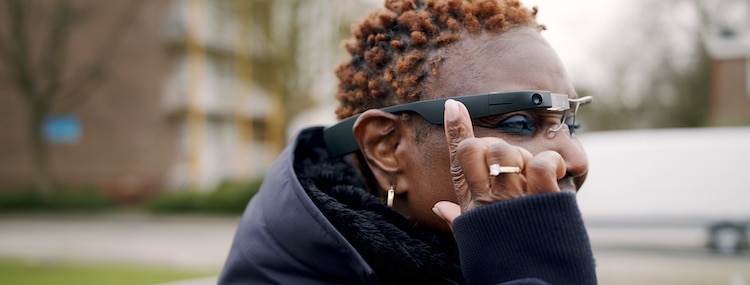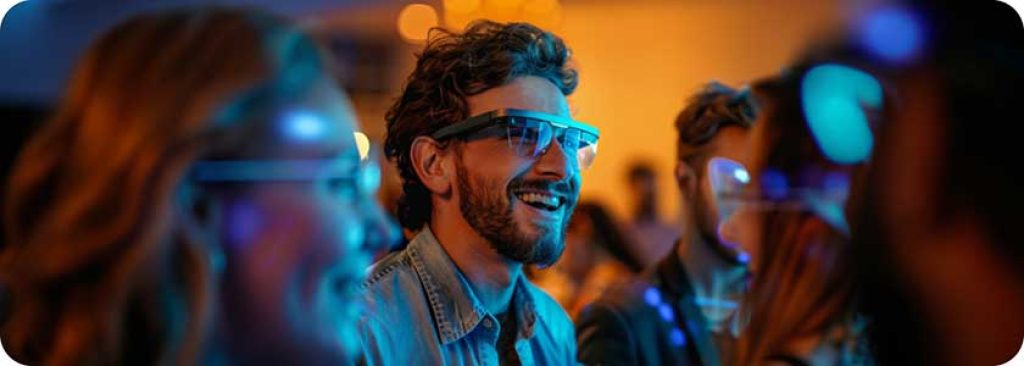Speech-to-Text Devices for Low Vision Users: Enhancing Communication and Productivity
Speech-to-Text Devices for Low Vision Users: Enhancing Communication and Productivity
Blog Article
Empowering Self-reliance With Assistive Technology for the Blind
The assimilation of assistive modern technology for people who are blind or visually damaged represents a considerable advancement in cultivating independence and improving high quality of life. With a range of tools-- from screen viewers to innovative responsive devices-- these modern technologies not only facilitate navigating and communication however additionally promote social incorporation and involvement in various aspects of life.
Comprehending Assistive Innovation
Although assistive modern technology has developed significantly for many years, its fundamental objective continues to be the same: to boost the lifestyle for people with handicaps, especially those who are blind or visually damaged. This modern technology incorporates a broad array of tools and gadgets that assist in self-reliance and performance in everyday tasks.
Assistive technology can be classified right into state-of-the-art and low-tech options, each developed to meet details requirements. State-of-the-art tools frequently consist of software application applications, specialized equipment, and adaptive devices that utilize advanced innovation to supply support in numerous contexts. Conversely, low-tech remedies might include everyday things that are modified to boost ease of access, such as magnifiers or tactile markers.
The combination of assistive modern technology right into the lives of people who are blind or visually impaired not just advertises autonomy yet also fosters social incorporation and engagement in instructional and professional atmospheres. By leveraging these modern technologies, individuals can navigate their surroundings, gain access to info, and interact efficiently, thus improving their overall lifestyle. Understanding assistive innovation is important for professionals, caretakers, and supporters who aim to sustain people in maximizing their potential and accomplishing higher freedom.
Kinds Of Assistive Instruments
Assistive tools for the blind and aesthetically impaired are essential tools that enhance daily obeying resolving certain obstacles experienced by customers. These gadgets can be broadly categorized right into 3 main kinds: optical gadgets, digital tools, and sensory gadgets.

Sensory tools, such as Braille display screens and tactile maps, provide different means to get information. Braille shows transform electronic message into Braille, allowing users to review touch. Responsive maps offer spatial understanding through elevated lines and structures, permitting much better ecological understanding.
Together, these assistive tools encourage individuals with visual impairments to engage more completely with their environments, advertising better freedom and self-confidence in day-to-day activities.

Influence On Every Day Life
The assimilation of assistive innovation right into the lives of people who are aesthetically impaired or blind considerably enhances their capability to navigate and connect with the globe around them. Tools such as display readers, Braille displays, and mobile applications promote accessibility to info, allowing users to engage with electronic content, interact efficiently, and take care of daily tasks independently.
Additionally, modern technologies like wise glasses and navigation apps offer real-time support in strange settings, boosting movement and confidence. These devices make it possible for users to determine barriers, read indicators, and even recognize faces, thus promoting a sense of freedom in public areas. Furthermore, home automation systems, which can be managed through voice commands, enable individuals to handle their living atmospheres better, boosting convenience and safety and security.
The effect of assistive innovation extends beyond useful jobs; it promotes social addition and emotional wellness. By linking the space in between people and their environments, these innovations encourage users to take part completely in area tasks, go after academic chances, and take part in significant relationships. Eventually, the improvement of assistive innovation contributes in redefining the opportunities for people that are aesthetically impaired or blind, leading to a more available and inclusive culture.
Success Stories and Endorsements

Another powerful testimonial originates from Mark, a current university grad that made use of display reading software application throughout his scholastic trip. This comprehensive eye exam innovation allowed him to accessibility program materials and join discussions, eventually bring about his effective transition right into the workforce. Mark debts assistive technology for encouraging him to achieve his career goals, stressing its duty in leveling the playing field for people with visual disabilities.
In addition, neighborhood facilities have actually reported boosted engagement in their programs thanks to the introduction of available digital platforms. These platforms have made it easier for people to attach, share resources, and support one another. These success stories jointly highlight the profound effect of assistive modern technology in cultivating freedom, improving quality of life, and breaking down barriers for the aesthetically damaged and blind community.
Future Trends in Assistive Technology
Emerging innovations are poised to reinvent the landscape of assistive technology for individuals who are aesthetically damaged or blind. Technologies in expert system (AI) and artificial intelligence are boosting the abilities of tools, enabling more instinctive customer experiences. AI-driven applications are significantly able to review and identify objects message out loud in real-time, offering customers with valuable information regarding their environments.
Additionally, innovations in wearable technology are producing new chances for self-reliance. Smart glasses outfitted with increased reality functions can overlay important details onto the customer's visual field, facilitating navigating and communication with the setting. The assimilation of Net of Points (IoT) devices is streamlining ease of access in wise homes, enabling individuals to regulate devices and get notices with voice commands or responsive user interfaces.
The advancement of braille displays and tactile responses systems is additionally on the surge, advertising access to digital material and boosting communication. As these innovations remain to advance, they promise to enhance daily living, instructional possibilities, and employment prospects for people with visual problems. Continual collaboration between technologists, individuals, and advocacy groups will be essential in making certain these technologies meet the requirements of the community efficiently.
Final Thought
Finally, assistive technology plays a crucial duty in enhancing the self-reliance of people who are blind or visually damaged. By giving crucial devices and resources, these innovations promote enhanced communication, access, and navigation to information, thus cultivating autonomy and confidence. The transformative influence of assistive tools not only promotes efficient interaction with the setting yet also urges social incorporation and participation in different elements of life, ultimately empowering customers to prosper within their areas.
The integration of assistive technology for people who are blind or visually impaired represents a considerable improvement in cultivating self-reliance and enhancing high quality of life.The integration of assistive technology right into the lives of individuals who are blind or visually hindered not just advertises autonomy yet also cultivates social addition and involvement in expert and educational atmospheres. Eventually, the innovation of assistive modern technology is crucial in redefining the possibilities for people that are aesthetically damaged or blind, Homepage leading to an extra inclusive and obtainable society.
Many individuals that are visually impaired or blind have shared inspiring success tales that highlight the transformative influence of assistive innovation on their lives.In final thought, assistive technology plays a critical role od eye doctor in improving the freedom of individuals who are blind or aesthetically impaired.
Report this page